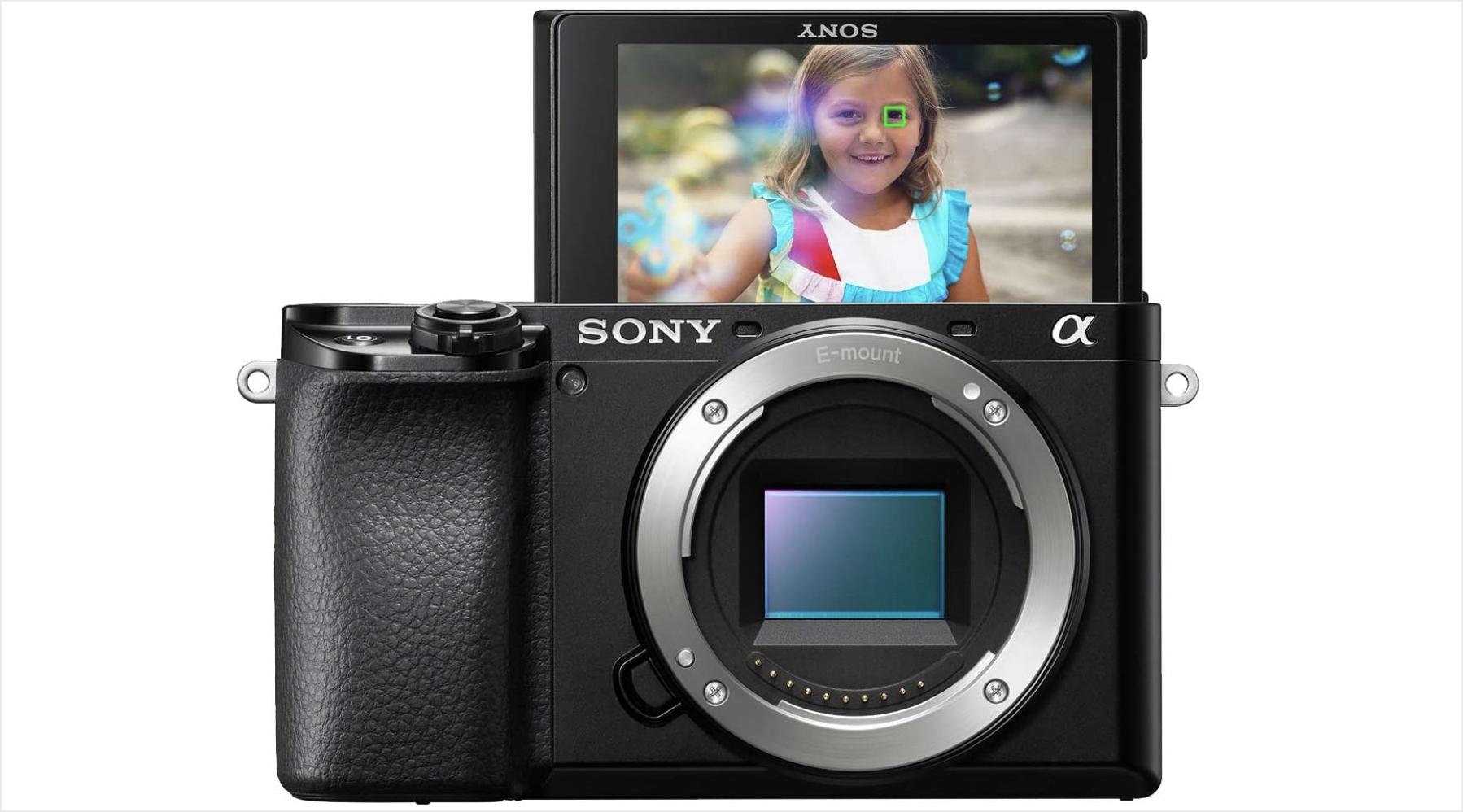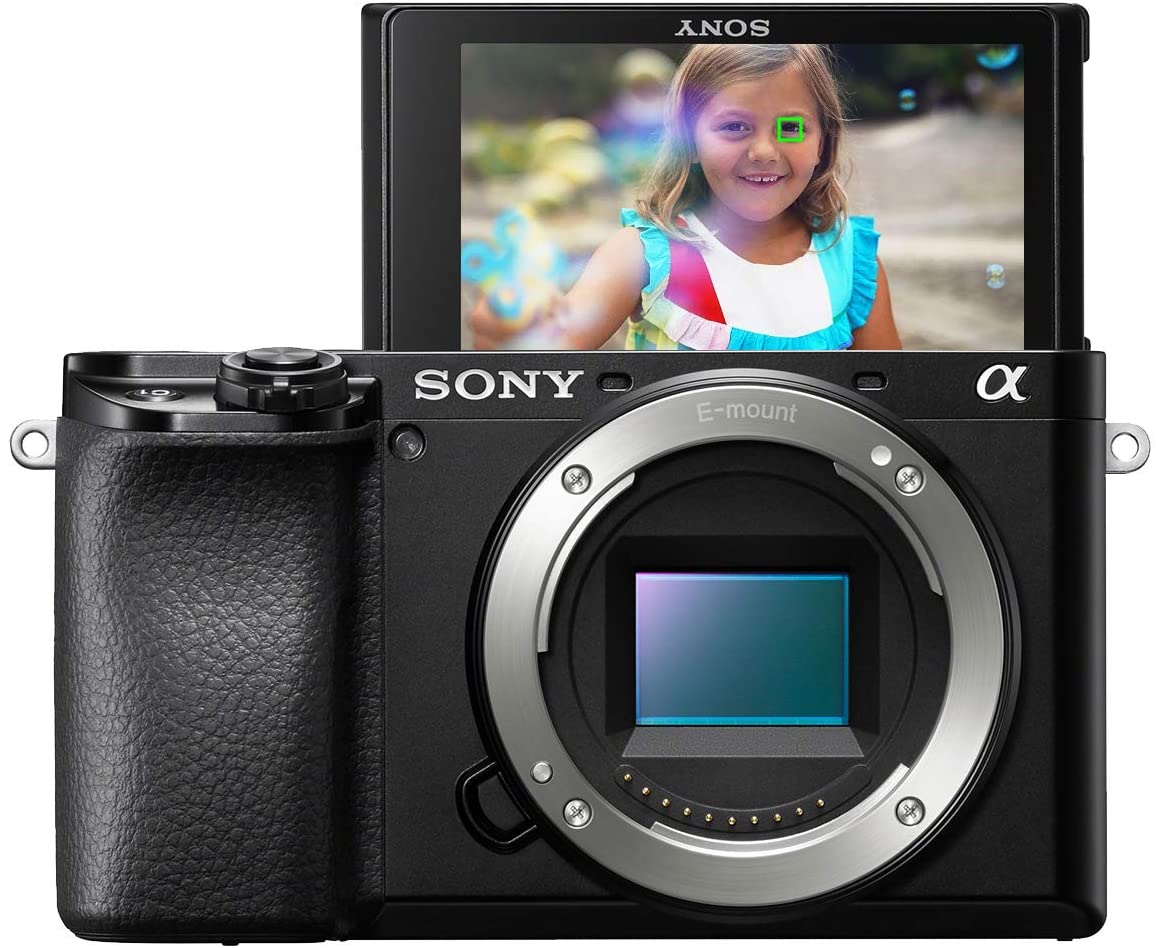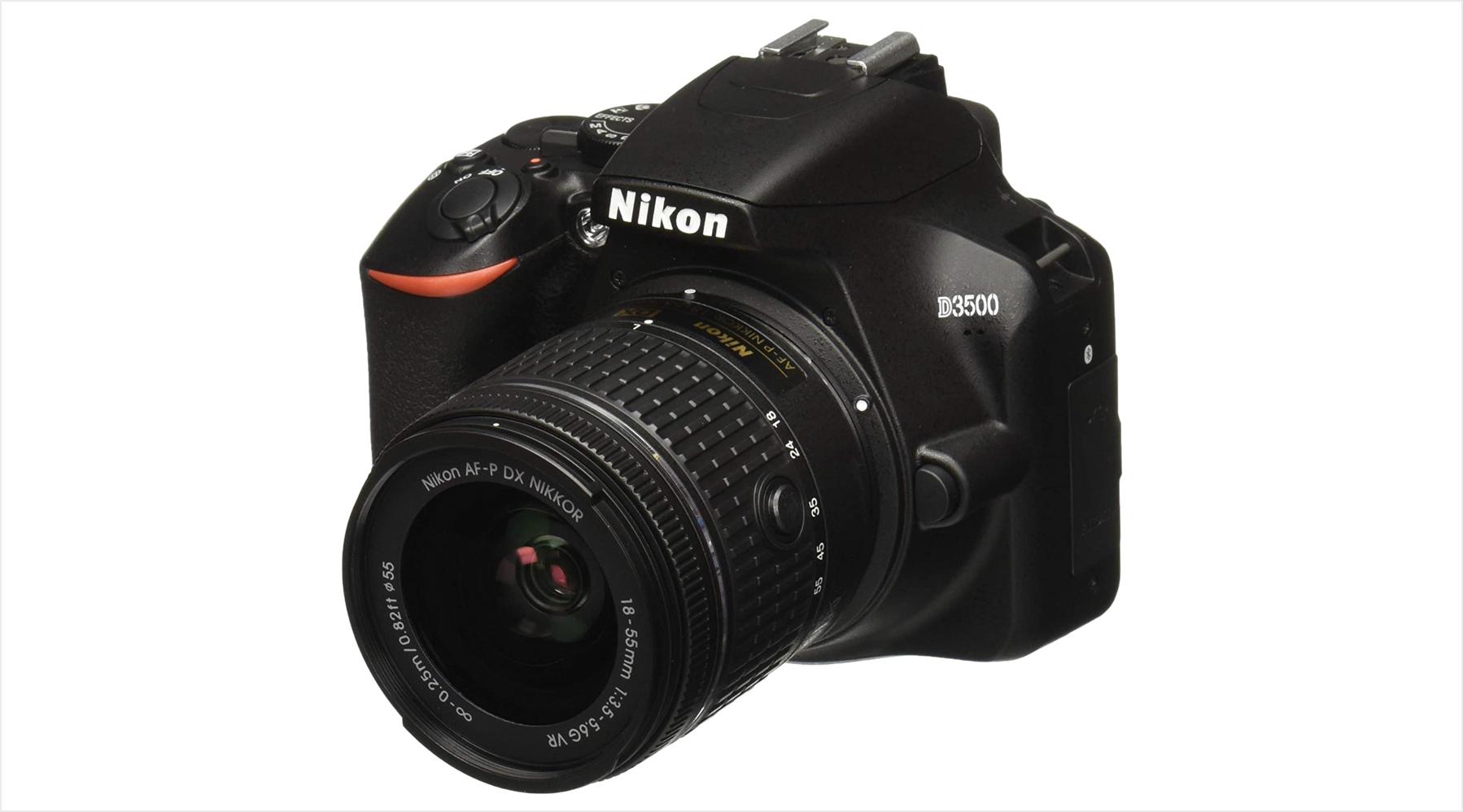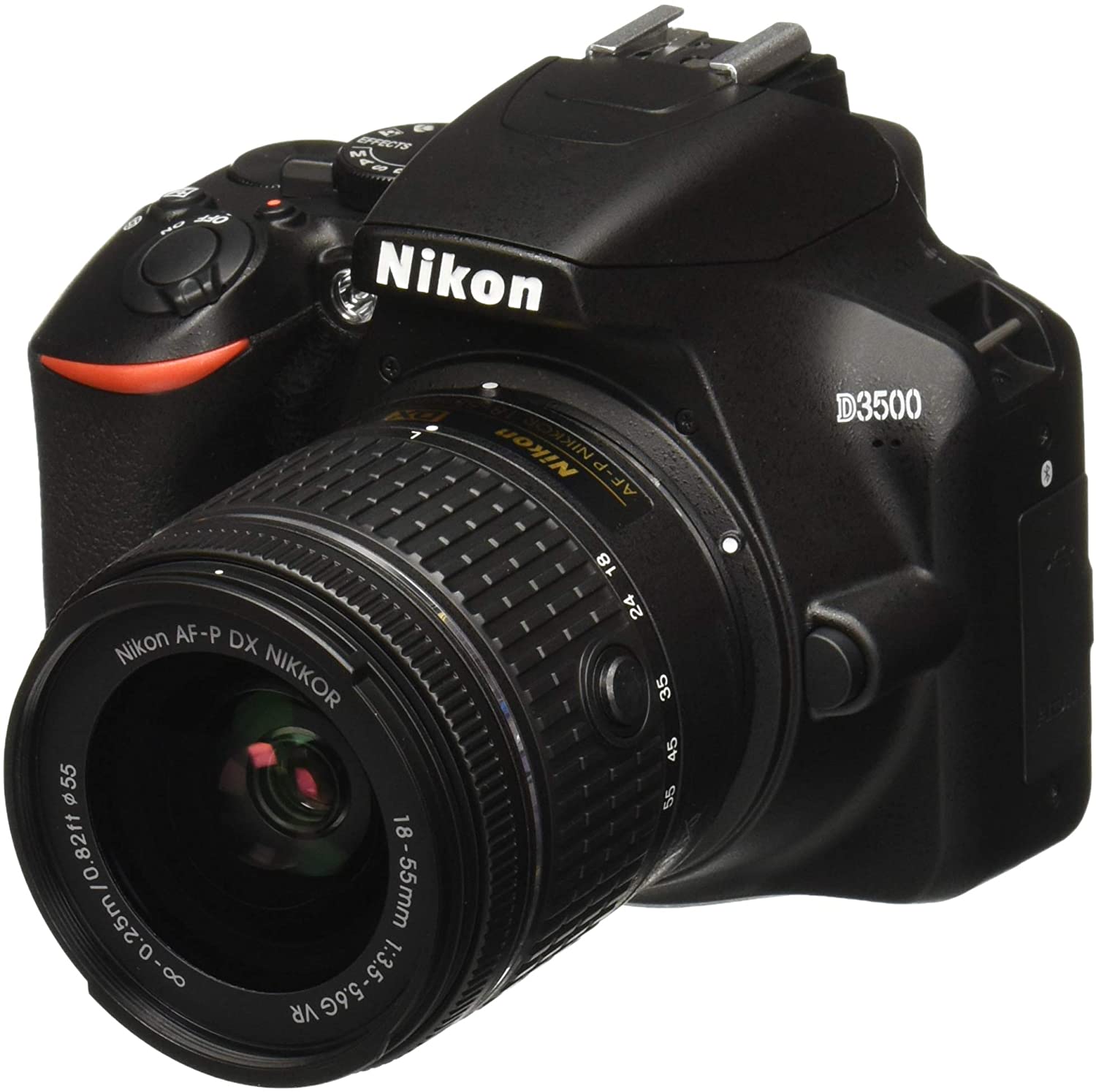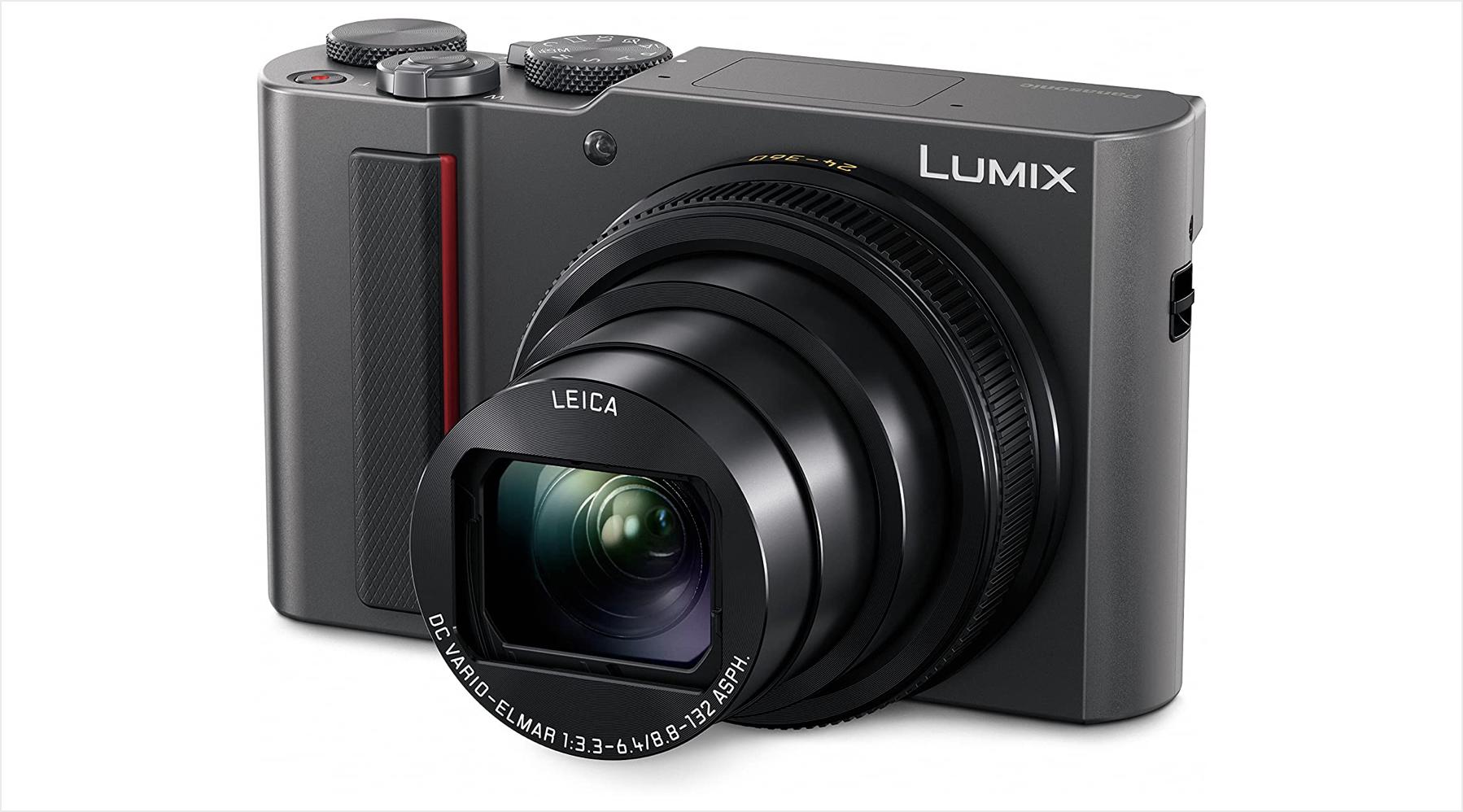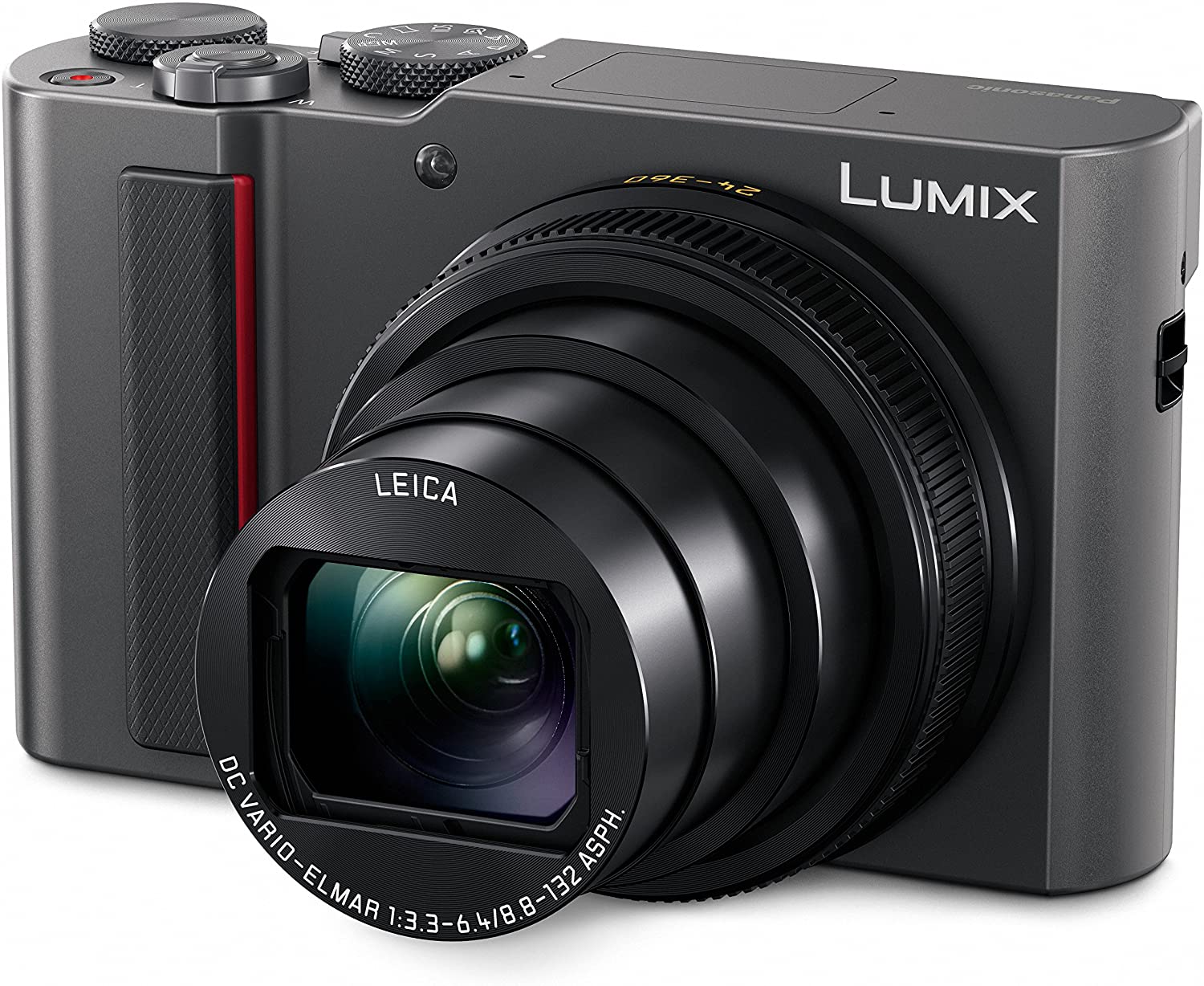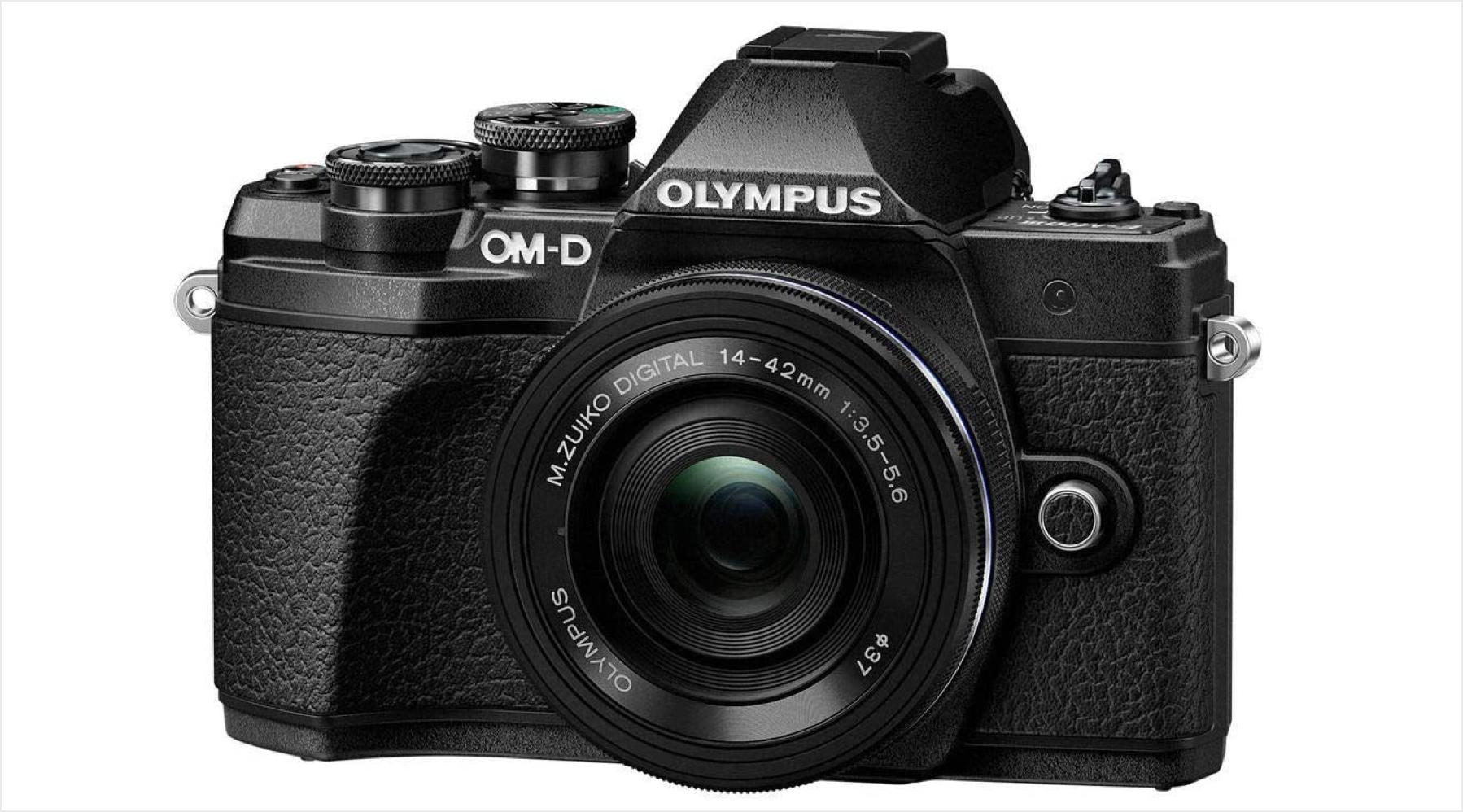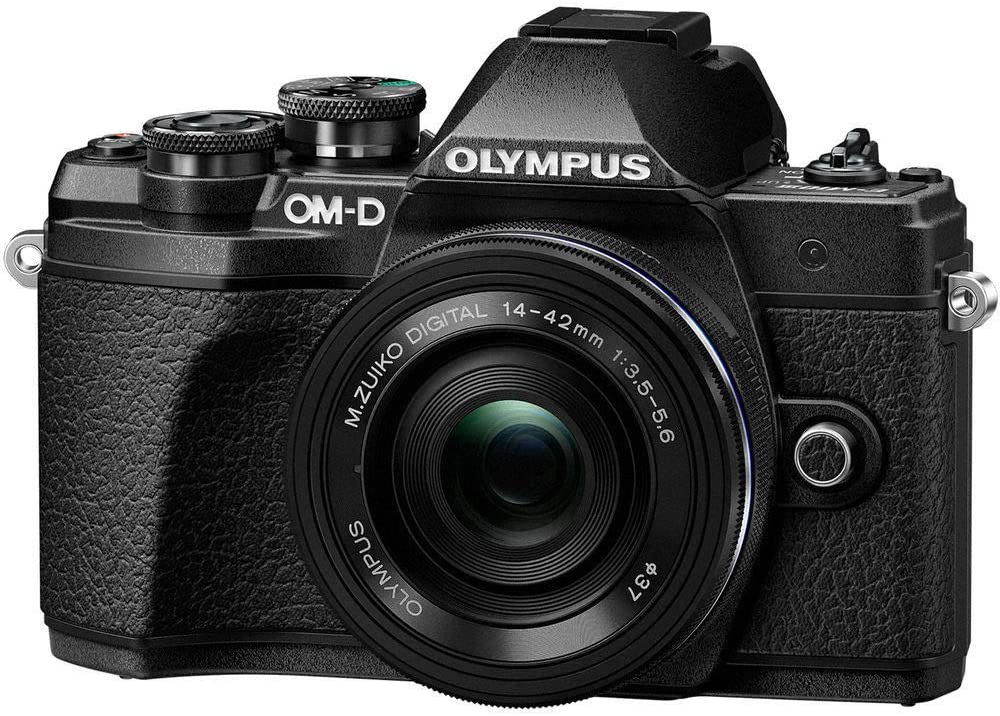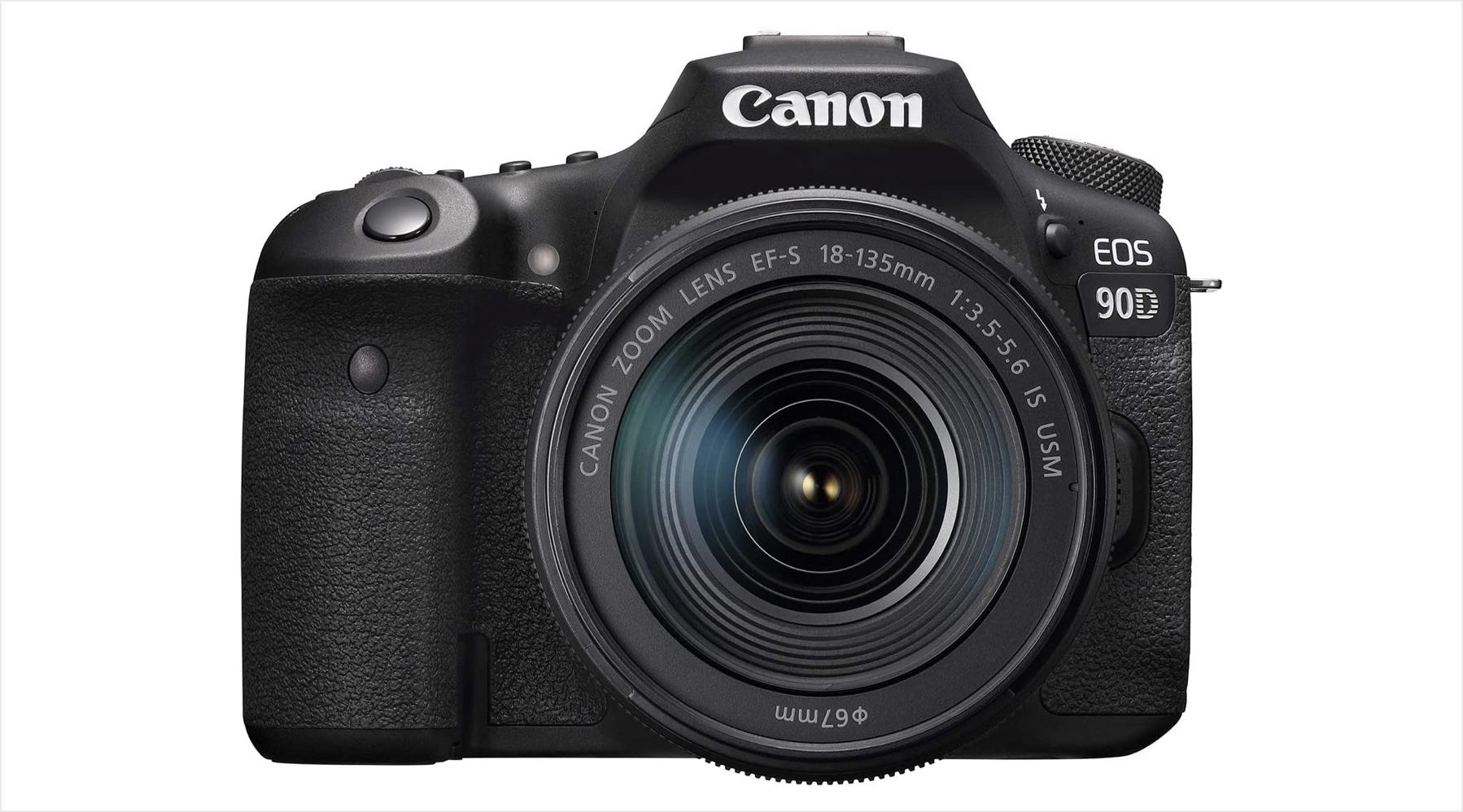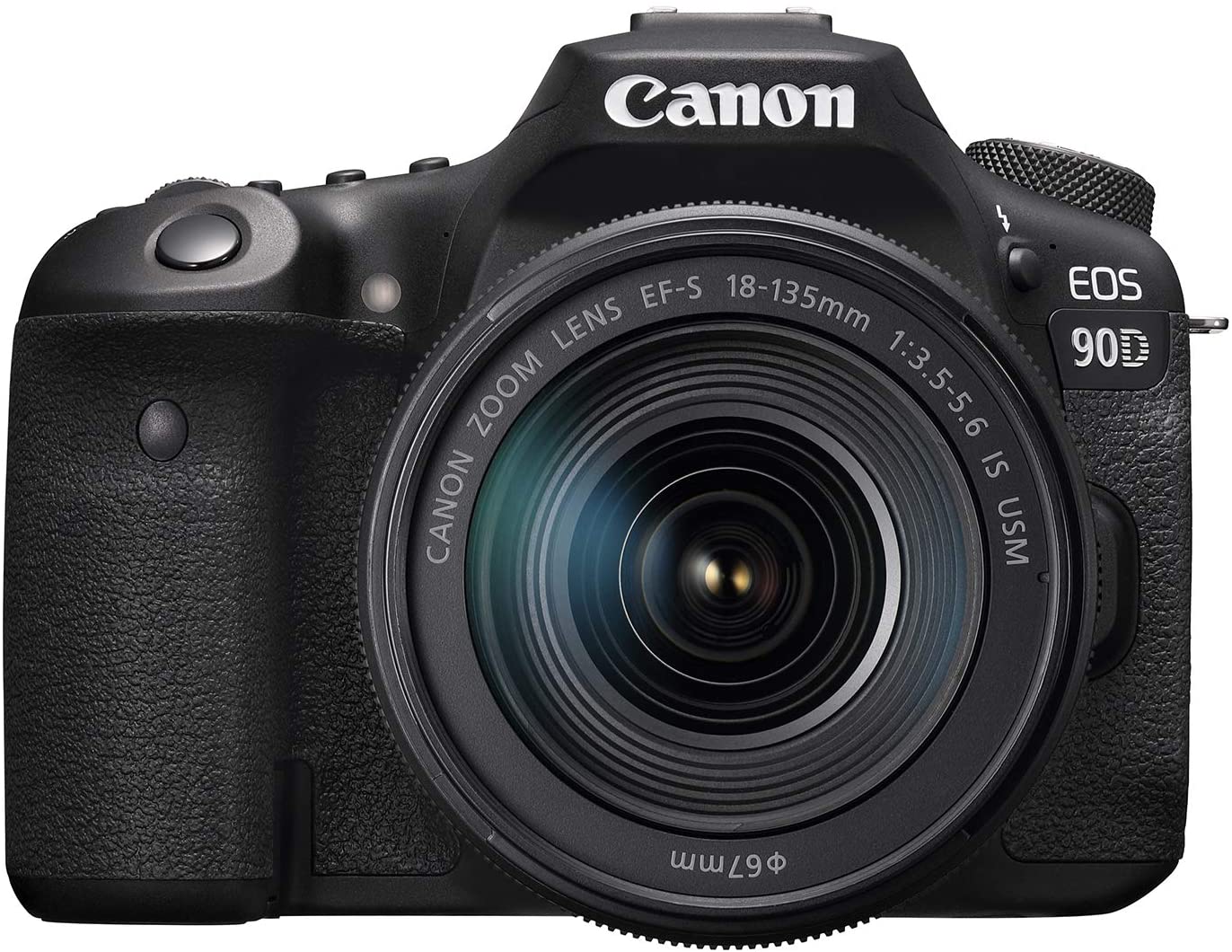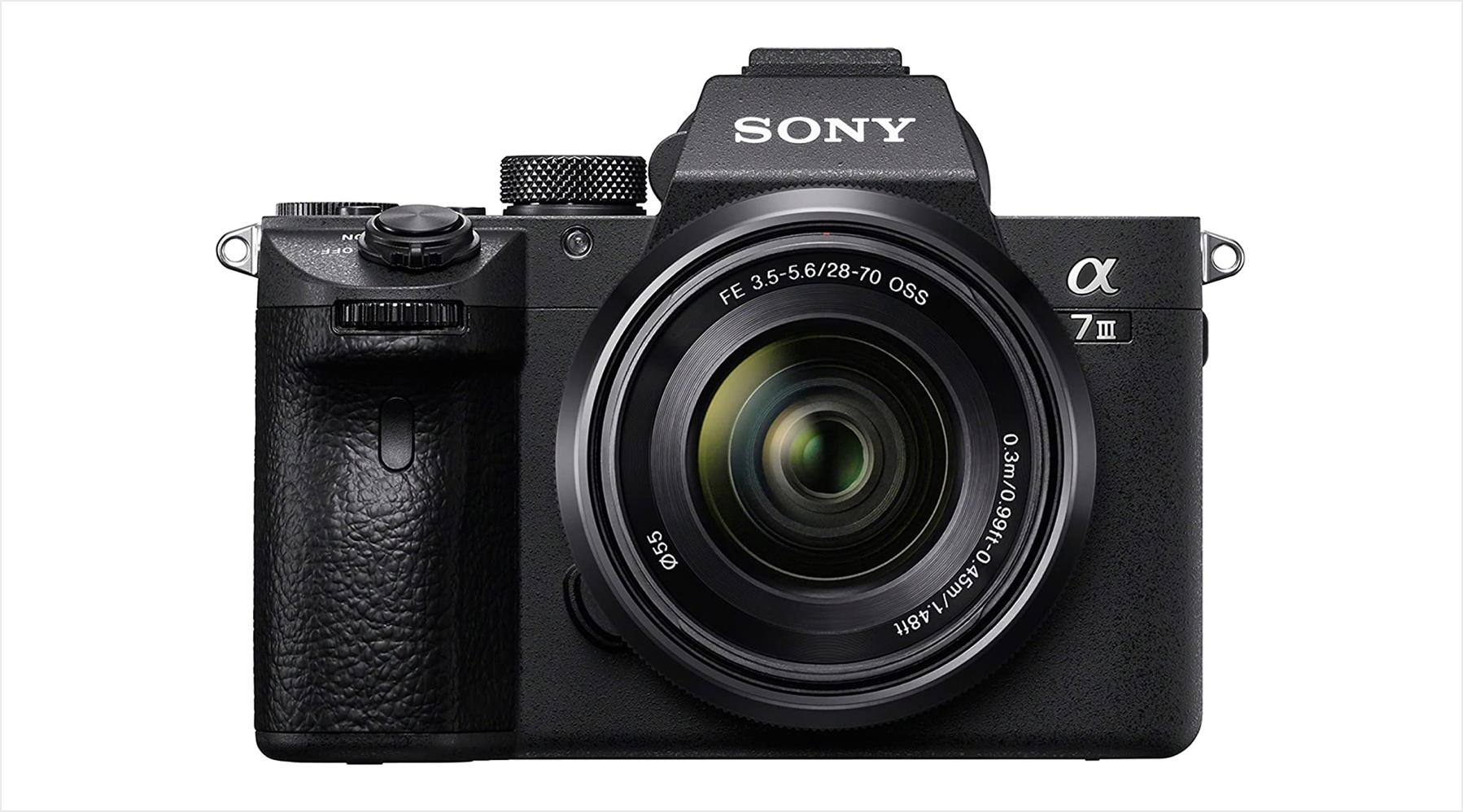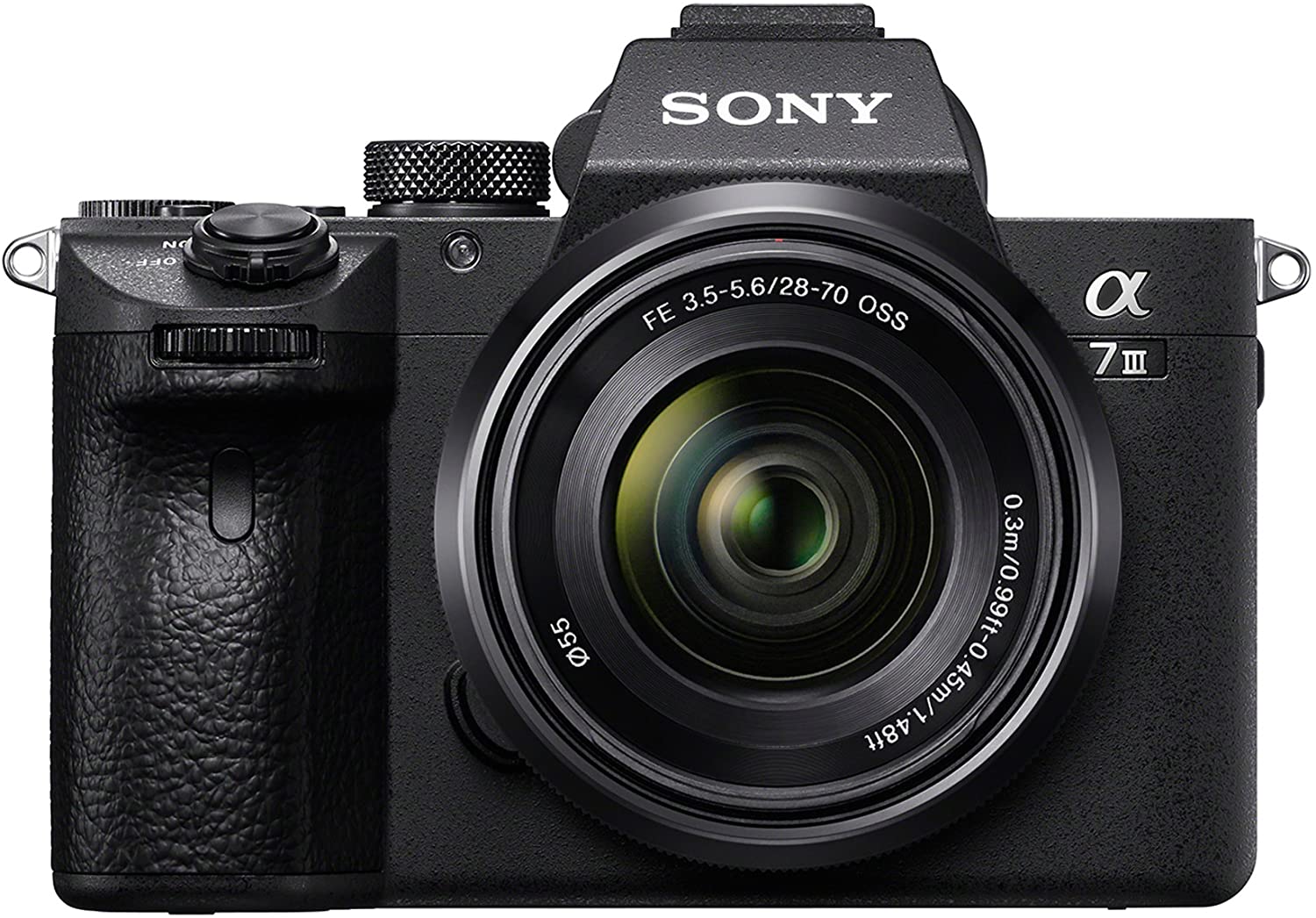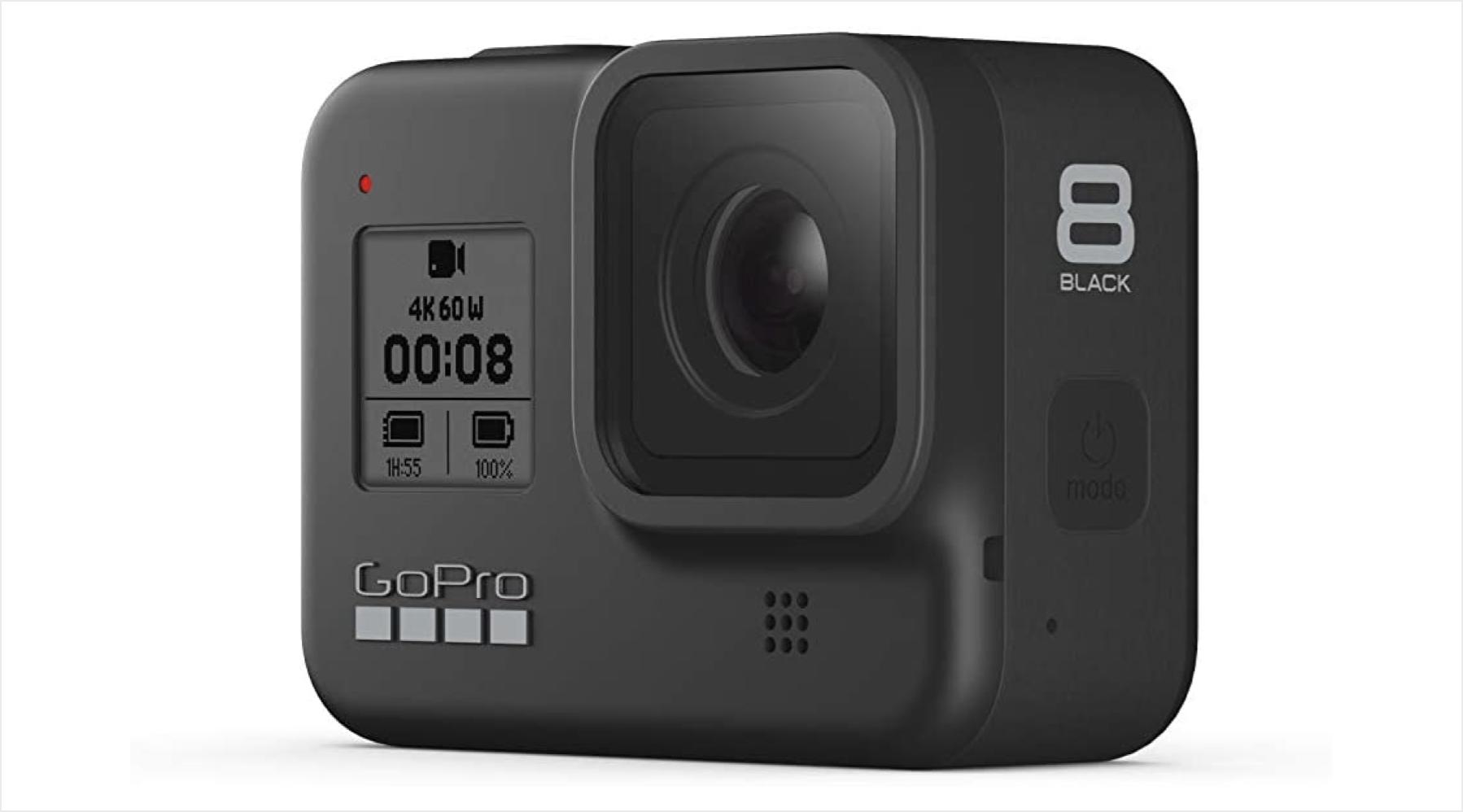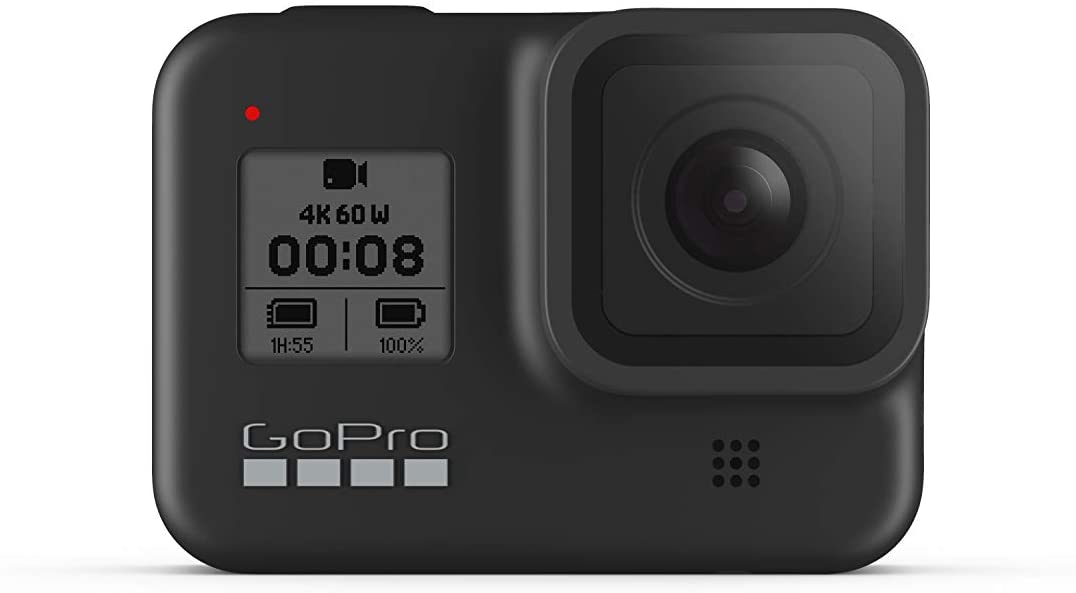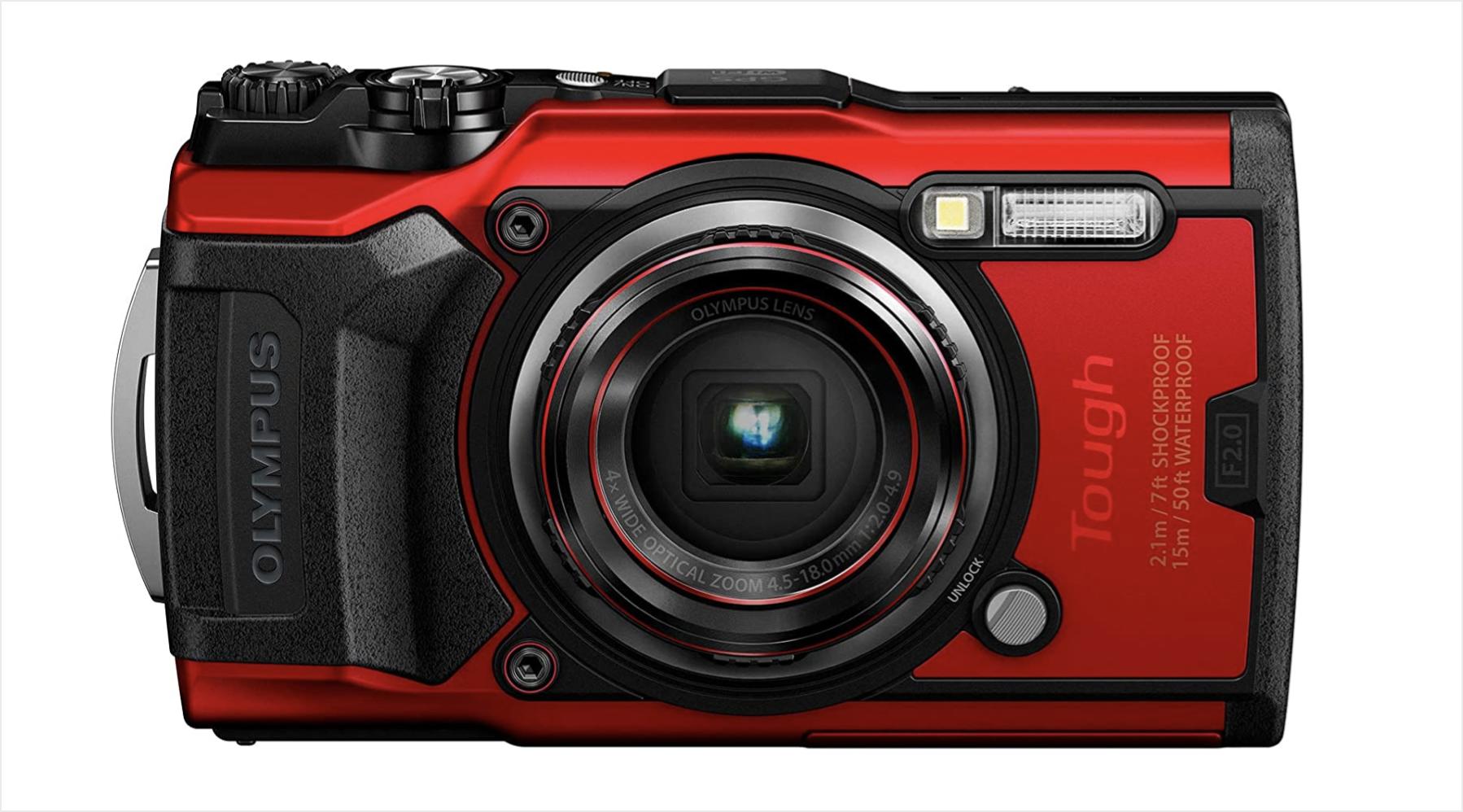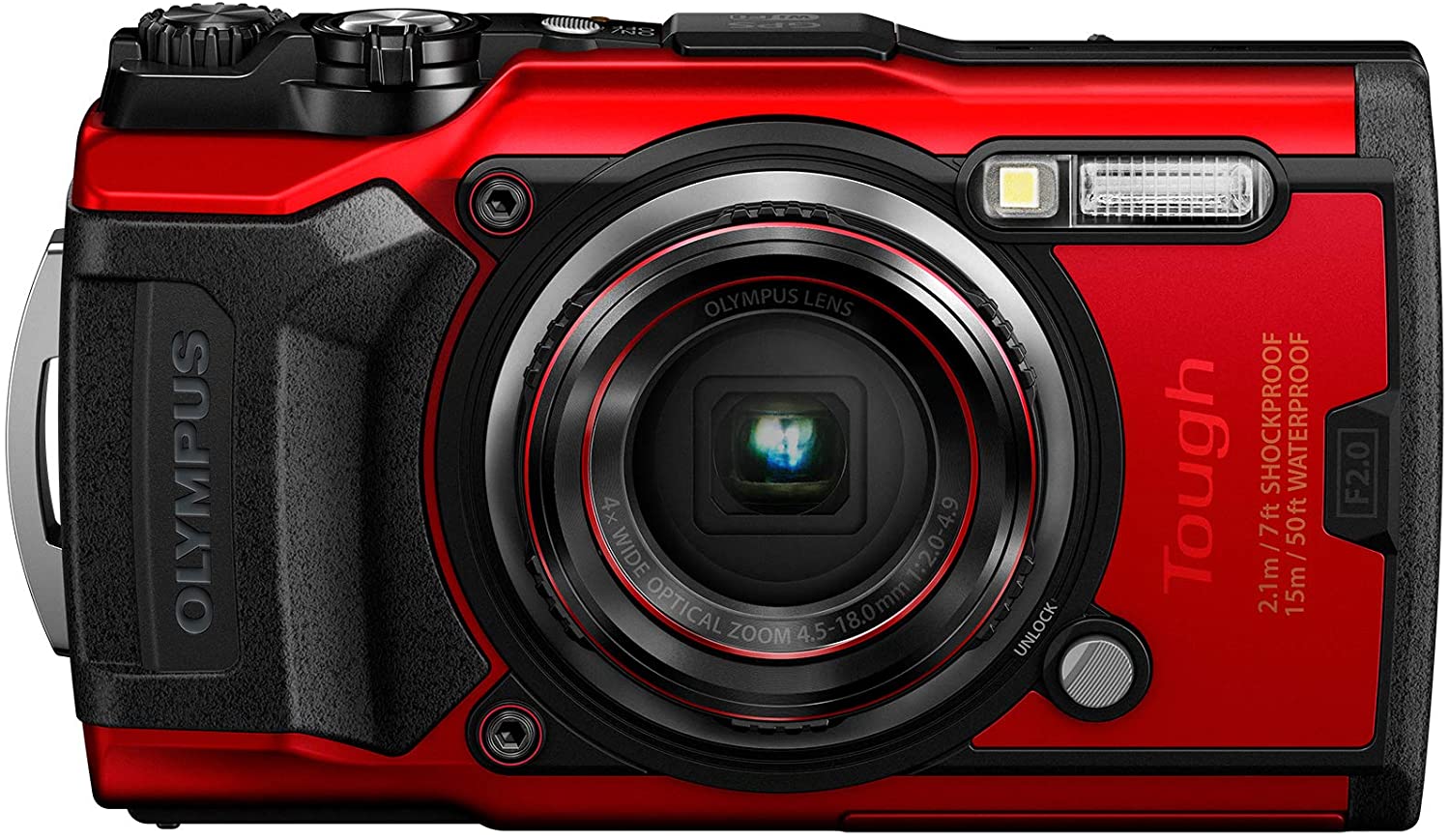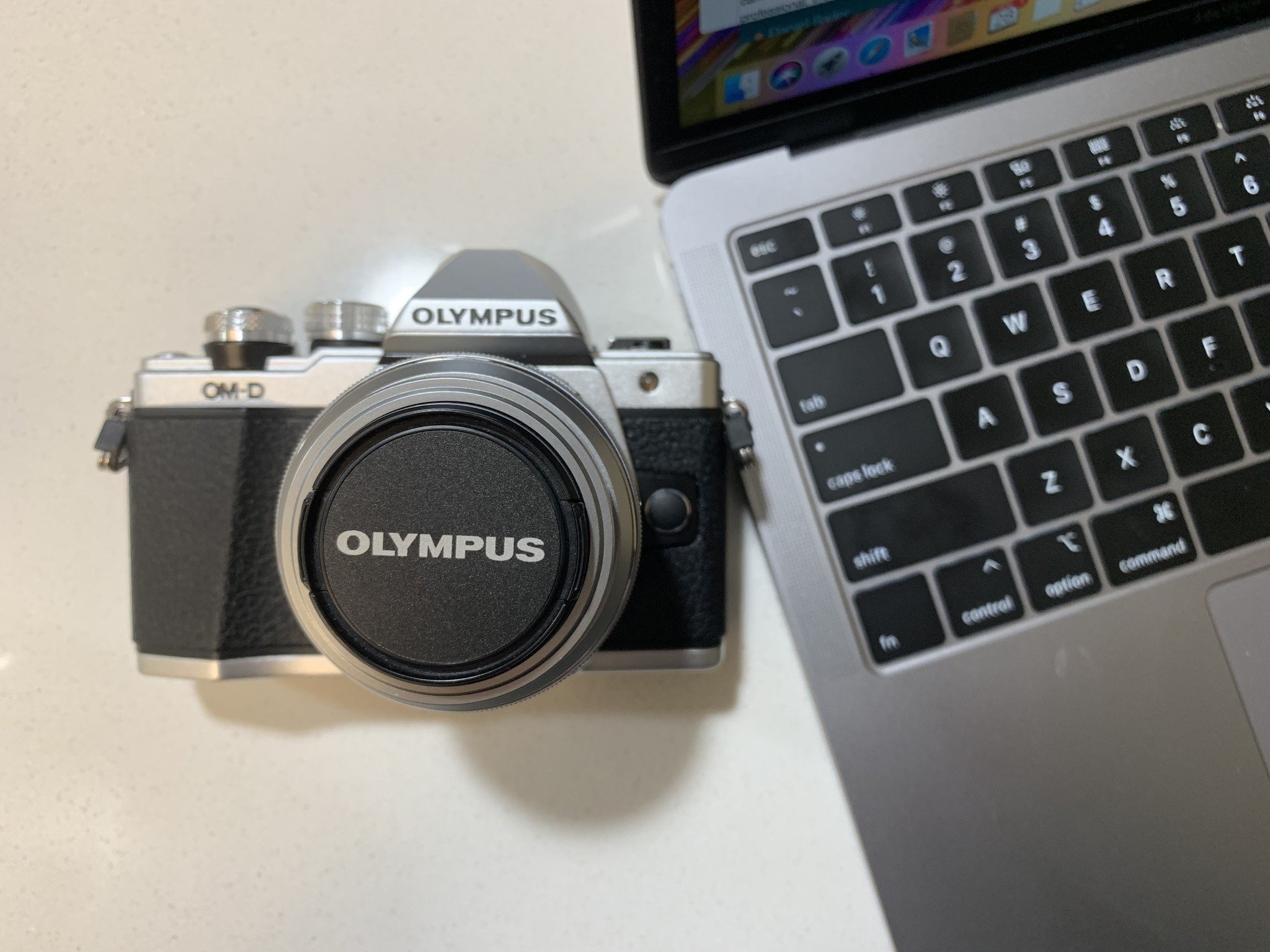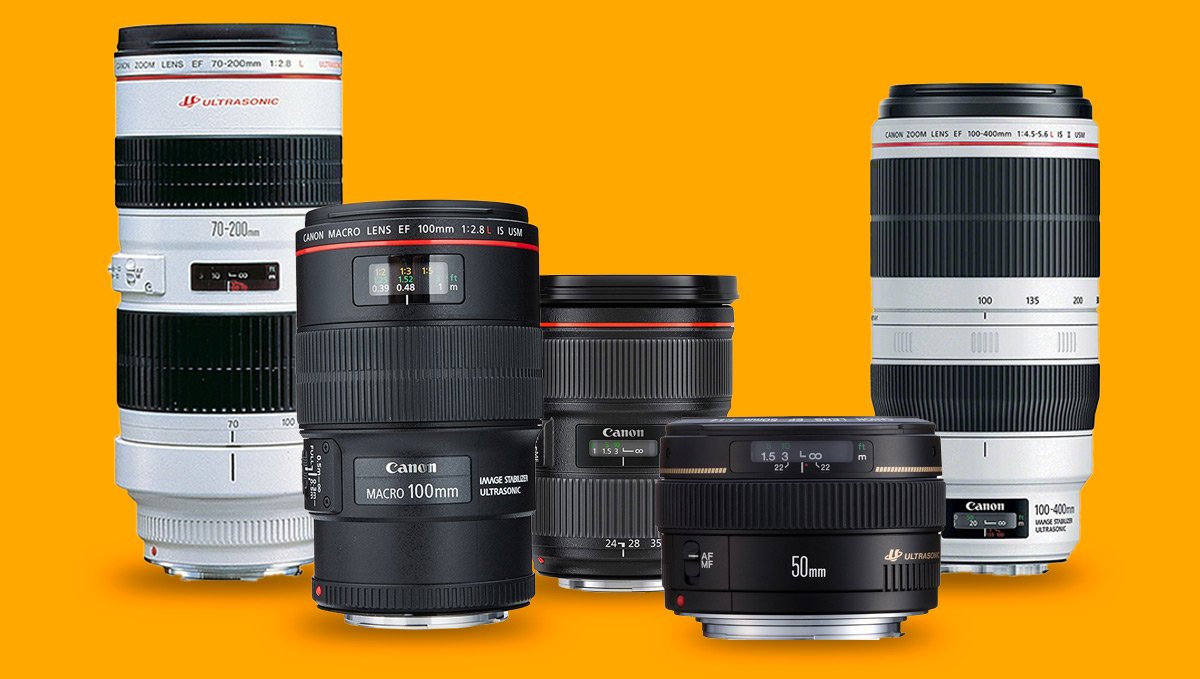Looking for a digital camera? These are the cream of the crop!
- aug
- 14
- Posted by Michael
- Posted in Okategoriserade
With hundreds of different cameras from dozens of different manufacturers, finding the absolute best digital camera can seem like an impossible task. There's a lot of different factors to consider,from the style of photography you like to shoot to the budget you have to spend, there is a ton of information to go through. Whether you're a professional, a hobbyist, or just a beginner, the best digital camera is waiting for you to find it and we can help.
Mirrorless cameras, DSLRs, and even point-and-shoot cameras all have their place at the table, offering unique benefits for different styles of photography. Regardless of which type of digital camera you are looking for, this list will help you find the best digital camera for you.
Best Digital Camera in 2020 at a glance
- Sony A6100 — The best digital camera for most people
- Nikon D3500 — The best DSLR for beginners
- Panasonic Lumix ZS200 — The best point-and-shoot camera
- Olympus OM-D E-M10 Mark III — The best intermediate mirrorless camera
- Canon EOS 90D — The best Intermediate DSLR camera
- Sony a7 III — The best full-frame mirrorless camera
What is the best digital camera?
Overall, the Sony A6100 stands out as the best digital camera for most people in 2020. With the best autofocus tracking in a beginner camera, an excellent battery life, the ability to shoot 4K video, and Bluetooth, Wi-Fi, and NFC compatibility, Sony A6100 is a fantastic camera for anyone looking to take great photos with ease.
The Nikon D3500 is perfect for people who love DSLRs and wants a large selection of lenses to buy. The picture quality of Nikon's entry-level DSLR is outstanding, the battery life is fantastic, and ISO range of 100-25,600, make for a compelling product.
If you're looking to upgrade your current camera or you just want to go big, the Sony A7 III is a full-frame mirrorless camera that is fit for a pro. The 4K video is uncropped, making video footage look amazing, and its 5-axis stabilization will ensure your photos and videos are always crisp and clear as possible.
Best digital camera:
- 1. Sony A6100
- 2. Nikon D3500
- 3. Panasonic Lumix ZS200
- 4. Olympus OM-D E-M10 Mark III
- 5. Canon EOS 90D
- 6. Sony A7 III
- 7. GoPro Hero8
- 8. Olympus Tough TG-6
1. Sony A6100: Best Digital Camera for Most People
Type: Mirrorless | Sensor: APS-C | Resolution: 24.2 MP | Video: 4K | Lens Mount: Sony E-mount
| Camera | Bundle | Retailer |
|---|---|---|
| Sony A6100 | Body Only | $598 at Amazon |
| Sony A6100 | Body with 16-50mm lens | $700 at Best Buy |
| Sony A6100 | Body with 16-50mm and 55-210mm lenses | $898 at Amazon |
| Sony A6100 | Body with 16-50mm and accessory kit | $748 at Walmart |
Pros:
- Excellent continuous autofocus
- Compact design
- Great APS-C sensor
- User-friendly for beginners
Cons:
- No image stabilization
- Sub-par touchscreen controls
What makes the Sony A6100 stand out as the best digital camera is the impressive continuous autofocus that makes burst shooting photos and capturing crisp and clean video so easy. The autofocus wi automatically switch focus from foreground to background as you move past your subject or object, and it's quick and precise. Even when shooting at the maximum 4K video at 30fps, the autofocus doesn't slow down at all. Plus, when you're snapping photos in autofocus mode, it's easy to snap a shot quickly every time. If you do venture out into the manual focus mode, you'll have a ton of options for focus points and you'll be able to quickly move between each one, letting you get the perfect focus on every shot.
The compact design is a welcome addition to any camera because it is so easy to carry around. The textured grip sits nicely in your hand and allows you to feel confident that the camera won't slip out. It's light enough and, depending on the lens you have, thin enough to fit in a big jacket pocket, meaning you can pull the Sony A6100 out anytime you need.
Lastly, its connectivity makes it super easy to share photos on social media, with your friends, or to your computer to store. It has Bluetooth, Wi-Fi, and NFC capabilities, meaning it can connect to a ton of different devices and accessories. If you get the Sony Imaging Edge Mobile app for your smartphone, you'll be posting pictures on Instagram in no time.
Sony A6100
The Sony A6100 will take beautiful pictures and videos, and its compact design makes it easy to take with you on your travels.
2. Nikon D3500: Best DSLR for Beginners
Type: DSLR | Sensor: APS-C CMOS | Resolution: 24.2 MP | Video: 1080p | Lens Mount: Nikon F mount
| Camera | Bundle | Retailer |
|---|---|---|
| Nikon D3500 | Body with 18-55mm lens | $497 at Amazon |
| Nikon D3500 | Body with 18-55mm and 70-300mm lenses | $597 at Amazon |
| Nikon D3500 | Body with 18-55mm lens | $500 at Best Buy |
| Nikon D3500 | Body only | $389 at Walmart |
Pros:
- Excellent sensor
- Easy to use
- Great value
- Vast lens selection
Cons:
- 1080p video
- LCD resolution isn't great
Nikon has been around for over 100 years, so when it comes to finding the best digital camera, Nikon is likely going to have something for everyone. I love the Nikon D3500 because it's proof that a good quality DSLR doesn't have to cost a fortune.
The APS-C CMOS is one of the best sensors in an entry-level camera you can find, delivering sharp and beautiful photos every time you press the shutter button. It's super forgiving in the hands of a novice, and if you have more experiences shooting photography, you can push the Nikon D3500 to deliver photos that look just like the pros.
You will likely buy the Nikon D3500 with the standard 18-55mm lens, which is a great lens to start learning with or to get your feet wet. Still, Nikon's vast selection of lenses that work with the Nikon F mount is impressive. This is a camera you can buy that will grow with you and your skills for years to come before you would ever have to consider upgrading.
Nikon D3500
With an excellent senors, a wide range of lenses to choose from, and a fantastic price, you'll get great value when you pick up a Nikon D3500
3. Panasonic Lumix ZS200: Best Point-and-Shoot Camera
Type: Compact | Sensor: 1-inch type | Resolution: 20.1 MP | Video: 4K | Lens: 24-360mm
| Camera | Bundle | Retailer |
|---|---|---|
| Pansonic Lumix ZS200 | Camera only | $648 at Amazon |
| Pansonic Lumix ZS200 | Camera with 64GB SD card and accessory bundle | $670 at Walmart |
Pros:
- Large 1-inch sensor
- Touchscreen controls
- 4K video at 30fps
- 15x optical zoom
Cons:
- Not great shooting at high ISO
- Small electronic viewfinder
The Panasonic Lumix ZS200 stands out from the rest of the competition in the compact camera race because its large 1-inch sensor and 20.1 MP resolution gives photos incredible detail and clarity. Plus, its 3-inch LCD panel on the back is perfect for viewing your photos, and it has excellent responsive touchscreen controls as well.
The zoom lens included on the ZS200 allows for a 15x optical zoom with coverage of 24-360mm, allows you to take many different types of photos. Plus, Panasonic's Power OIS image stabilization is included, which prevents camera shake from ruining your photos when you're zoomed. What's more? The speedy autofocus makes it super easy to grab sharp and clear shots when you're on the go.
Panasonic Lumix ZS200
With a surprisingly large 1-inch sensor, the ability to shoot 4K video and photos, and a great zoom lens, the Panasonic Lumix ZS200 gives you incredible value and performance for a point-and-shoot camera.
4. Olympus OM-D E-M10 Mark III: Best Intermediate Mirrorless Camera
Type: Mirrorless | Sensor: Micro Four Thirds | Resolution: 16.1 MP | Video: 4K | Lens Mount: Micro Four Thirds system
| Camera | Bundle | Retailer |
|---|---|---|
| Olympus OM-D E-M10 Mark III | Body with 14-42mm EZ Lens | $799 at Amazon |
| Olympus OM-D E-M10 Mark III | Body with 14-42mm EZ Lens | $800 at Best Buy |
| Olympus OM-D E-M10 Mark III | Body with 14-42mm EZ Lens, M.Zuiko 40-150mm lens, and accessories | $898 at Walmart |
Pros
- Excellent 5-axis stabilization
- Premium build and finish
- Fast-focusing
- 4K Video
Cons
- Only 16 MP
- Not ideal for action shots
One of my personal favorites, the Olympus OM-D E-M10 Mark III is perfect for any budding photographer or photo enthusiasts looking for the next step.
While it's easy to look at the 16 MP sensor as a downside, the Micro Four Thrids system that Olympus employs takes advantage of that smaller sensor to provide fast focusing speeds. Whether you're using a prime lens or a zoom lens, the E-M10 Mark III can quickly and reliably focus in either manual or auto modes, making it easy to whip out and grab the shot you want.
What truly makes the Olympus OM-D E-M10 Mark III standout from the competition is the in-camera image stabilization. It's the best digital camera in its class that I have ever used without a tripod to capture low-light scenarios because the 5-axis stabilization allows you to get sharp and crisp images when even when the shutter is open longer. You don't have to worry about your hands shaking and ruining your photos even when you're shooting video since the stabilization also works while shooting footage in 4K at 30fps.
Olympus OM-D E-M10 Mark III
The build quality is outstanding, and although the 16MP may be a bit lower than the competition, the superior 5-axis image stabilization and fast focusing speed, the Olympus OM-D E-M10 Mark III provides a ton of value.
5. Canon EOS 90D: The best DSLR for people looking to upgrade
Type: DSLR | Sensor: APS-C CMOS | Resolution: 32.5 MP | Video: 4K | Lens Mount: Canon EF/EF-S
| Camera | Bundle | Retailer |
|---|---|---|
| Canon EOS 90D | Body only | $1,199 at Amazon |
| Canon EOS 90D | Body with EF-S 18-135mm lens | $1, 600 at Best Buy |
| Canon EOS 90D | Body with EF-S 18-55mm lens | $1,126 at Walmart |
Pros
- Best in class pixel count
- Full articulating LCD screen
- Super battery life
- 4K Video (uncropped)
Cons
- Pricey
- Can struggle at higher ISO
If you love the look and feel of a DSLR and you want one that can be your go-to camera in most situations, the Canon EOS 90D is your best option.
Its super-powered 32.5MP sensor is absolutely the highest resolution you'll get in a DSLR around this price, and it allows you to take incredibly detailed shots that are perfect for cropping and printing without losing any quality. Plus, it can shoot video at 4K at 30fps but also can shoot 1080p video up to 120fps, making it great for slow-motion video and cinematic video alike.
Its fantastic battery life — rated for 1300 shots — is evident when you use it. In fact, with average usage —using a combination of the live viewfinder and the eye viewfinder — you'll likely get more than the 1,300 shots before you need to charge you. Plus, it is weatherproof, meaning it can handle shooting in a little bit of rain when it gets a bit chilly, and it can get a bit dusty/dirty without damaging anything.
Canon EOS 90D
If you're looking to take your photography game to the next level, the Canon EOS 90D is the perfect tool to get you there.
6. Sony A7 III: Best Full-Frame Mirrorless Camera
Type: Mirrorless | Sensor: Full Frame | Resolution: 24.2 MP | Video: 4K | Lens Mount: Sony E-mount
| Camera | Bundle | Retailer |
|---|---|---|
| Sony A7 III | Body only | $1,798 at Amazon |
| Sony A7 III | Body with 28-70mm lens | $1, 998 at Amazon |
| Sony A7 III | Body with 28-70mm lens | $2,000 at Best Buy |
| Sony A7 III | Body only | $1,700 at Walmart |
Pros:
- Incredible 5-axis stabilization
- Uncropped 4K video
- Compact and durable design
- Stunning AF system
Cons:
- Not affordable
- Battery life
When it comes to the world of mirrorless cameras, Sony is typically in the conversation as one of the best manufacturers. Though the Sony A7 III is Sony's lowest model of full-frame mirrorless cameras, it's powerful enough. It packs enough features to make it a fantastic camera for enthusiasts and pros alike.
The Sony A7 III is super popular among YouTubers, vloggers, and video buffs thanks to its amazing video capabilities. Of course, it can film in 4K up to 30fps and also film 1080p up to 120fps. It's not just the frame rates that are useful; the A7 doesn't crop 4K video, meaning you get all that data and detail to play within your favorite video editing software.
Don't worry; video isn't the only thing the Sony A7 III can do; it's incredible for taking still photos. It's in-body 5-axis stabilization is superb and will help you get a sharp image every time, and make shooting in low-light environments much more manageable. Plus, it's 693-point autofocus system is genuinely in a class of its own. It's fast, precise, and ensures that your video or photo will also be in focus on the subject you want.
Sony A7 III
With incredible image stabilization for both photos and video, the Sony A7 III will give you the sharpest and smoothest video and stills a mirrorless camera can offer.
7. GoPro Hero8 Best Action Camera
Type: Action Cam | Sensor: N/A | Resolution: 12 MP | Video: 4K | Lens Mount: N/A
| Camera | Bundle | Retailer |
|---|---|---|
| GoPro Hero8 | Camera with 128GB microSD card | $356 at Amazon |
| GoPro Hero8 | Camera only | $300 at Bestbuy |
| GoPro Hero8 | Camera with accessory bundle | $439 at Walmart |
Pros:
- 4K video up to 60fps
- 1080p video up to 120fps
- 720p video up to 240fps
Cons:
- Photos are only 12MP
- Needs lots of accessories
While the GoPro Hero8 isn't a traditional camera, it is the best digital camera for capturing extreme action on video.
That's right; with the ability to record 4K video at 60 fps, the GoPro Hero8 can get you super sharp and detailed footage from just about anywhere. Plus, the various mounts you can get for the GoPro Hero8 will make it easy to capture whatever action you want.
The standard GoPro suction cup mount is a great place to start if you look for a secure mount to keep you GoPro standing tall. Of course, if you want to get closer to the action, you can always strap a GoPro to your head, with the GoPro head strap.
Although the GoPro Hero8 does require some additional accessories to get the most out of it, it's impressive at capturing video for slow-motion in post-production because it can film at high frame rates. If you drop to 1080p, you'll be able to capture video at 120fps, and you can double that (to 240fps) if you drop down to 720p.
GoPro Hero8
Whether you're snowboarding down a mountain or recording your sweet moves at the skate park, the GoPro Hero8 is the perfect action cam for catching all the sweet moves you want on video.
8. Olympus Tough TG-6: Best Point-and-Shoot for Travelers
Type: Compact | Sensor: BSI CMOS | Resolution: 12 MP | Video: 4K | Lens Mount: N/A
| Camera | Bundle | Retailer |
|---|---|---|
| Olympus Tough TG-6 | Camera only | $349 at Amazon |
| Olympus Tough TG-6 | Camera with foam floating strap | $362 at Amazon |
| Olympus Tough TG-6 | Camera only | $380 at Best Buy |
| Olympus Tough TG-6 | Camera with accessory bundle | $347 at Walmart |
Pros:
- Affordable price
- 4K video
- Waterproof
- Shockproof
Cons:
- Only 12MP
- No eye viewfinder
If you're not interested in switching lenses all the time or buying a camera that has a ton of dials to play around with, a good quality point-and-shoot will do you just fine, and the Olympus Tough TG-6 is perfect for your next trip.
Built to be as durable as possible and able to withstand any adventure, the Olympus Tough TG-6 is waterproof to a depth of 15m (50ft) and shockproof from 2.1m (7ft) meaning you can drop it or throw it in the pool and it shouldn't be any worse for wear. It has an underwater shooting mode so you can capture cool underwater shots with little to no effort.
Its 12MP sensor may not be the absolute best in any camera; it's more than capable of capturing a good shot. The built-in 25-100mm lens has an aperture range f/2-4.9, giving you plenty of options for taking photos in various lighting conditions.
Lastly, it's a great little camera for vlogging or making quick videos because it can film in 4K at 30fps. You likely won't shoot the next blockbuster on this compact camera, but you can take great, sharp-looking video to document your travels or your everyday life.
Olympus Tough TG-6
While it may not have the biggest sensor in its class, the Olympus Tough TG-6 has plenty of features, and it can take a beating. It's perfect for adventures.
How to find the right digital camera for you
This article showcases the best digital cameras you can buy, but you may have a few burning questions about precisely what some of the terms that we camera junkies use. Whether you need to know the difference between mirrorless and DSLR, or you're wondering if what get of accessories you might need, here's some handy additional information to ease your mind.
? Mirrorless vs. DSLR vs. Compact cameras?
There are three main types of cameras that most people associate with digital cameras; mirrorless, DSLR, and compact — often referred to as point-and-shoot cameras.
Mirrorless cameras are the new hot thing right now because they are the same as a DSLR expect the mirror inside the camera has been taken out. This gives mirrorless cameras a few advantages. Usually, a mirrorless camera will be much more compact and less bulky than a DSLR because it saves space by excluding the mirror. While they are a newer technology than DSLR, tons of professional videographers and photographers prefer using the best mirrorless cameras, and the format is gaining popularity quickly.
DSLR cameras (which stand for digital single-lens reflex) have the same design as old 35mm film cameras used to back in the day. They are the tried and true method of photography, and typically much more beefy then their mirrorless counterparts. DSLRs —especially entry-level — generally are better at shooting in colder conditions and tend to be less affected by weather than mirrorless cameras of the same ilk. Some of the best DSLR cameras are used widely by professionals in a number of different industries.
Lastly, there are compact cameras — often called point-and-shoot. It's the old-school type of digital camera that used to be all the rage many years ago. They have a compact design —thus the name — and typically don't have any interchangeable lenses. They are great for carrying around with you everywhere because they are so small and light, and because you don't have any fancy settings to play around with, you can capture pictures in a flash. Most of them have some sort of video capture capabilities, albeit with fewer features, which makes them great for capturing those special moments while you're traveling without a fuss.
? Do I need an SD card?
Short answer, yes. An SD card is needed for virtually every camera on this list. An SD card is simply a memory card that will let you save your photos and video you capture.
You'll need one in the camera to take any photos, but you can easily remove them when you want to transfer photos to your computer or other devices.
Some cameras (like the GoPro Hero8) will use a microSD card, which is essentially the same thing only a smaller format.
What SD cards are good for photography?
You can use pretty much any SD card in your camera, but you're going to want an SD card that has reasonably fast read and write speeds. Not only will this ensure the photos can be stored on your SD quickly while you're out shooting. It will also allow you to transfer files from your SD card to other devices in a timely fashion.
SD cards come in different sizes, typically 32GB, 64GB, 128GB, 256GB, and 512GB. What size you need is going to depend on what you're doing. If you record lots of videos, you'll need lots more space; if you only shoot still photos, you'll likely need less. I wouldn't go with anything less than 64GB, because if you're shooting in RAW or even large JPEG format (which you probably are), those files are pretty big and you want to ensure you don't run out of space while you're out.
If you want a suggestion of where to start, the Lexar Professional Class 10 UHS-II 2000X is an excellent SD card to use in your camera.
? What lenses do I need for my camera?
There's no short answer to this question, as there are hundreds of different lenses for each camera. Not only that, but many manufacturers use different — and in some cases propriety —lens mounts, meaning you're not going to be able to fit a Nikon lens on a Canon body. There are two main groups you can fit most lenses into — prime lenses and zoom lenses.
Prime Lenses
Prime lenses are set to a specific focal length, so they don't zoom at all. If you're using a prime lens and you want your subject to be closer or further in the frame, you'll need to physically move closer or further away. Prime lenses usually have pretty low aperture values making them great for low-light photography and portrait photography thanks to the beautiful bokeh (background blur) you can achieve around your subject.
Zoom Lenses
Zoom lenses do precisely what the name implies; they can zoom in to different focal lengths, meaning you can stay in the same spot but get your subject closer in the frame. Zoom lenses will have a focal length range — like a popular 18-55mm lens — indicating just how far they can go. The higher the number, the more zoomed-in the lens can go. These lenses are often used for wildlife photography, sports photography, and other situations where you can't get as close to the action.
There are a ton of different lenses to choose from, and which lenses you may need will depend on the type of photography you're doing. At the end of the day, most DSLR and mirrorless cameras will come with a basic lens to get you started. After using that lens for a while, you can decide what the next lens you want might be. Are you constantly shooting portraits, shooting at dusk, or just doing street photography? Grab a prime lens. Are you trying to shoot your kid's hockey game, or snap a picture of bird's up in trees? You'll want to pick up a zoom lens.
? Can a digital camera record video?
Yes, pretty much all modern digital cameras can shoot video most cameras on this list can shoot 4K video, but not all 4K video is of equal quality.
The term 4K video only describes the resolution of the video. It doesn't take into account the quality of that video when it comes to sensor quality, or frame rate, or anything else.
As a general rule of thumb, the 4K video you grab from a point-and-shoot camera won't be making the next blockbuster film; however, if you plan to post that footage on social media, then it may look just fine. Of course, if you are looking to make a short film, or want your YouTube video to pop, quality 4K video from a mirrorless or DSLR camera is the way to go.
If video is your main reason for wanting a digital camera, I will go with the Sony A7 III if you have the money.
Credits — The team that worked on this guide
Luke Filipowicz is a staff writer at iMore who has a passion for photography and music. Whether he's snapping a shot for Instagram on his iPhone or taking portraits of his friends on his Olympus mirrorless camera, he's always looking for ways to be creative.
Senaste inläggen
- Apple reportedly planning an in-person event for iPad reveal next week
- Locked out of your Apple ID? You’re not the only one as Apple faces widespread reports of forced password resets
- Apple reportedly in talks with OpenAI for iOS 18 chatbot
- Externa skärmar till Macbook – vi testar 3 heta alternativ
- Apple yanks multiple AI nude-generating apps from the iPhone’s App Store
Senaste kommentarer
Arkiv
- april 2024
- mars 2024
- februari 2024
- januari 2024
- december 2023
- november 2023
- oktober 2023
- september 2023
- augusti 2023
- juli 2023
- juni 2023
- maj 2023
- april 2023
- mars 2023
- februari 2023
- januari 2023
- december 2022
- november 2022
- oktober 2022
- september 2022
- augusti 2022
- juli 2022
- juni 2022
- maj 2022
- april 2022
- mars 2022
- februari 2022
- april 2021
- mars 2021
- januari 2021
- december 2020
- november 2020
- oktober 2020
- september 2020
- augusti 2020
- juli 2020
- juni 2020
- maj 2020
- april 2020
- mars 2020
- februari 2020
- januari 2020
- december 2019
- november 2019
- oktober 2019
- september 2019
- augusti 2019
- juli 2019
- juni 2019
- maj 2019
- april 2019
- mars 2019
- februari 2019
- januari 2019
- december 2018
- november 2018
- oktober 2018
- september 2018
- augusti 2018
- juli 2018
- juni 2018
- maj 2018
- april 2018
- mars 2018
- februari 2018
- januari 2018
- december 2017
- november 2017
- oktober 2017
- september 2017
- augusti 2017
- juli 2017
- juni 2017
- maj 2017
- april 2017
- mars 2017
- februari 2017
- januari 2017
- december 2016
- november 2016
- oktober 2016
- september 2016
- augusti 2016
- juli 2016
- juni 2016
- maj 2016
- april 2016
- mars 2016
- februari 2016
- januari 2016
- december 2015
- november 2015
- oktober 2015
- september 2015
- augusti 2015
- juli 2015
- juni 2015
- maj 2015
- april 2015
- mars 2015
- februari 2015
- januari 2015
- december 2014
- november 2014
- oktober 2014
- september 2014
- augusti 2014
- juli 2014
- juni 2014
- maj 2014
- april 2014
- mars 2014
- februari 2014
- januari 2014
Kategorier
- –> Publicera på PFA löp
- (PRODUCT) RED
- 2015
- 25PP
- 2nd gen
- 32gb
- 3D Touch
- 3D-kamera
- 4k
- 64gb
- 9to5mac
- A10
- A9X
- Aaron Sorkin
- Accessories
- adapter
- AirPlay
- AirPods
- Aktiv
- Aktivitetsarmband
- Aktuellt
- Alfred
- AMOLED
- Android Wear
- Angela Ahrendts
- Ångerätt
- announcements
- Ansiktsigenkänning
- app
- App Store
- Appar
- Apple
- Apple Beta Software Program
- Apple Book
- Apple CarPlay
- Apple Event
- Apple iMac
- Apple Mac Mini
- Apple Macbook
- Apple MacBook Air
- Apple MacBook Pro
- Apple Macos
- Apple Maps
- Apple Music
- Apple Music Festival
- Apple Music Radio
- Apple Offer
- Apple Online Store
- Apple Park
- Apple Pay
- Apple Pencil
- Apple Podcast
- Apple Store
- Apple Store 3.3
- Apple TV
- apple tv 4
- Apple TV 4K
- Apple Watch
- Apple Watch 2
- Apple Watch 8
- Apple Watch 9
- Apple Watch Apps
- Apple Watch SE
- Apple Watch Series 2
- Apple Watch Sport
- Apple Watch Ultra
- AppleCare
- AppleTV
- Application
- Applications
- Apps
- AppStore
- Apptillägg
- Apptips
- AppTV
- April
- Arbetsminne
- armband
- Art Apps
- Återköp
- återvinning
- Åtgärdsalternativ
- atvflash
- Audio Apps
- Augmented REality
- Back-to-school
- Bakgrundsbilder
- BankId
- Barn
- Batteri
- batteriskal
- batteritid
- Beats
- Beats 1
- Beats Solo 2 Wireless
- Beats Solo2
- Bebis
- Beginner Tips
- Belkin
- Bendgate
- beta
- Beta 3
- betaversion
- betaversioner
- bilddagboken.se
- bilder
- bilhållare
- billboard
- Bioteknik
- Blendtec
- Bloomberg
- Bloons TD 5
- Bluelounge
- Bluetooth
- Böj
- Booking.com
- Borderlinx
- bose
- bugg
- Buggar
- Buggfixar
- Butik
- C More
- Calc 2M
- Camera
- Campus 2
- Canal Digital
- Carpool Karaoke
- Caseual
- Catalyst
- CES 2015
- Chassit
- Chip
- Chrome Remote Desktop
- Chromecast
- citrix
- clic 360
- CNBC
- Connect
- Cydia
- Dagens app
- Dagens tips
- Damm
- Danny Boyle
- Data
- datamängd
- Datorer
- Datortillbehör
- Datum
- Defense
- Dekaler
- Designed by Apple in California
- Developer
- Development
- Digital Inn
- Digital Touch
- Digitalbox
- DigiTimes
- Direkt
- Discover
- display
- DisplayMate
- Dive
- Docka
- Dräger 3000
- Dropbox
- Droples
- DxOMark
- E-post
- earpod
- EarPods
- Earth Day
- Eddie Cue
- eddy cue
- Educational Apps
- Ekonomi
- Ekonomi/Bransch
- El Capitan
- Elements
- ElevationLab
- Elgato Eve
- Elgato Eve Energy
- EM 2016
- Emoji
- emojis
- emoticons
- Enligt
- EU
- event
- Eventrykten
- EverythingApplePro
- Faceshift
- facetime
- Fäste
- Featured
- Features
- Feng
- Film / Tv-serier
- Filmer
- Filstorlek
- Finance Apps
- Finder For AirPods
- Finland
- FireCore
- Fitbit
- Fitness Accessories
- Fjärrstyr
- Flurry
- Födelsedag
- fodral
- Förboka
- Force Touch
- förhandsboka
- Första intryck
- Forumtipset
- foto
- FoU (Forskning och Utveckling)
- Fource Touch
- Foxconn
- FPS Games
- Framtid
- Fre Power
- Frontpage
- Fullt
- Fuse Chicken
- Fyra
- Gadgets
- Gagatsvart
- Gamereactor
- Games
- Gaming
- Gaming Chairs
- Gästkrönika
- General
- Gigaset
- Gitarr
- Glas
- GM
- Google Maps
- Google Now
- gratis
- grattis
- Guide
- Guider
- Guider & listor
- Guld
- hack
- Halebop
- hållare
- Hälsa
- Hårdvara
- HBO
- HBO Nordic
- Health
- Health and Fitness
- Health and Fitness Apps
- Hej Siri
- Helvetica Neue
- Hemelektronik
- Hemknapp
- Hemlarm
- Hermes
- Hitta min iphone
- Hjärta
- högtalare
- HomeKit
- HomePod
- hörlurar
- htc
- Hue
- Humor
- i
- I Am A Witness
- IBM
- iBolt
- iBomber
- iBook
- icar
- iCloud
- iCloud Drive
- iCloud Voicemail
- iCloud.com
- iDevices
- IDG Play
- idownloadblog
- iFixit
- ikea
- iKörkort
- iLife
- Illusion Labs
- iMac
- IMAP
- iMessage
- iMessages
- iMore Show
- Incipio
- InFuse
- Inspelning
- Instagram-flöde
- Instrument
- Intel
- Internet/Webbtjänster
- iOS
- iOS 10
- iOS 12
- iOS 17
- iOS 18
- iOS 5
- iOS 7
- iOS 8
- iOS 8 beta
- iOS 8.1.3
- iOS 8.2
- iOS 8.3
- iOS 8.4
- iOS 8.4.1
- iOS 9
- iOS 9 beta 4
- iOS 9.1
- iOS 9.1 beta 2
- iOS 9.2
- iOS 9.2.1
- iOS 9.3
- IOS Games
- ios uppdatering
- ios9
- iPad
- iPad Accessories
- iPad Air
- iPad Air 2
- iPad Air 3
- iPad Apps
- iPad Mini
- iPad mini 4
- iPad Mini 6
- iPad mini retina
- iPad Pro
- iPados
- iphone
- iPhone 12
- iPhone 14
- iPhone 14 Pro
- iPhone 15
- iPhone 16
- iPhone 17
- iPhone 5
- iPhone 5S
- iPhone 5se
- iPhone 6
- iphone 6 plus
- iPhone 6c
- iPhone 6s
- iPhone 6S plus
- iPhone 7
- iPhone 7 display
- iPhone 7 Plus
- iPhone 7s
- iPhone Accessories
- iPhone Apps
- iPhone SE
- iphone x
- iPhone XS
- iPhone XS Max
- iPhone7
- iPhoneGuiden
- iPhoneguiden.se
- iPhones
- iPod
- iPod Nano
- iPod shuffle
- ipod touch
- iSight
- iTunes
- iWatch
- iWork
- iWork för iCloud beta
- Jailbreak
- James Corden
- Jämförande test
- Jämförelse
- Jet Black
- Jet White
- Jönssonligan
- Jony Ive
- Juice Pack
- Juridik
- Just mobile
- kalender
- kalkylator
- Kamera
- Kameratest
- Karriär/Utbildning
- Kartor
- Kevin Hart
- keynote
- Keynote 2016
- KGI
- KGI Security
- Kina
- Klassiskt läderspänne
- Kod
- Kollage
- koncept
- konceptbilder
- köpguide
- krasch
- Krascha iPhone
- Krönika
- Kvartalsrapport
- Laddhållare
- laddningsdocka
- Laddunderlägg
- läderloop
- lagar
- Lagring
- Lajka
- Länder
- lansering
- laserfokus
- Layout
- leather loop
- LG
- Liam
- Lifeproof
- Lightnigport
- lightning
- Linux
- LinX
- live
- Live GIF
- Live Photos
- Live-event
- Livsstil
- Ljud & Bild
- Logitech
- LOL
- Lösenkod
- Lösenkodlås
- Lovande spel
- LTE
- Luxe Edition
- M3
- M3TV
- Mac
- Mac App Store
- Mac Apps
- Mac Mini
- Mac OS
- Mac OS X
- Mac OS X (generellt)
- Mac OS X Snow Leopard
- Mac Pro
- Macbook
- Macbook Air
- Macbook Pro
- Macforum
- Macintosh
- macOS
- Macs
- MacWorld
- Made for Apple Watch
- magi
- Magic
- MagSafe
- Martin Hajek
- matematik
- Meddelanden
- Media Markt
- Medieproduktion
- Mediocre
- Messaging Apps
- Messenger
- MetaWatch
- Mfi
- Michael Fassbender
- microsoft
- Mikrofon
- Minecraft
- Ming-Chi Kuo
- miniräknare
- minne
- Mixer
- Mixning
- Mjukvara
- mobbning
- Mobile Content
- Mobilt
- Mobilt/Handdator/Laptop
- Mobiltelefon
- Mockup
- Mophie
- mors dag
- moto 360
- Motor
- MTV VMA
- multitasking
- Music
- Music Apps
- Music, Movies and TV
- Musik
- Musikmemon
- MW Expo 2008
- native union
- Nätverk
- Navigation Apps
- nedgradera
- Netatmo Welcome
- Netflix
- Netgear Arlo
- News
- Niantic
- Nike
- Nikkei
- Nintendo
- Nöje
- Norge
- Notis
- Notiscenter
- nya färger
- Nyfödd
- Nyheter
- Officeprogram
- Okategoriserade
- OLED
- omdöme
- Omsättning
- OS X
- OS X El Capitan
- OS X Mavericks
- OS X Yosemite
- Outlook
- Övrig mjukvara
- Övrigt
- PanGu
- papper
- patent
- PC
- pebble
- Pebble Smartwatch
- Pebble Steel
- Pebble Time
- Pebble Time Steel
- Persondatorer
- Petter Hegevall
- PewDiePie
- Philips
- Philips Hue
- Phones
- Photoshop
- Planet of the apps
- Plex
- Pluggar
- Plus
- Plusbox
- Podcast
- Podcast Apps
- Policy
- Porträttläge
- PP
- Pris
- priser
- problem
- Problems
- Productivity Apps
- Program
- Prylar & tillbehör
- Publik
- publik beta
- QuickTime
- räkenskapsår
- räkna
- ram
- RAM-minne
- Rapport/Undersökning/Trend
- Rea
- Reading Apps
- recension
- Red
- reklaamfilm
- reklam
- reklamfilm
- reklamfilmer
- rekord
- Rendering
- reparation
- Reportage
- Reptest
- ResearchKit
- Retro
- Review
- Ring
- Ringa
- Rocket Cars
- Rosa
- Rumors
- Rumours
- RunKeeper
- rykte
- Rykten
- Safir
- Säkerhet
- Säkerhetsbrist
- Samhälle/Politik
- samsung
- Samtal
- San Francisco
- SAP
- security
- Series 2
- Servrar
- Shigeru Miyamoto
- Sia
- Siri
- SJ Min resa
- skal
- Skal iPhone 6
- skal iPhone 6s
- skärm
- SKärmdump
- Skärmglas
- Skribent
- skribenter medarbetare
- Skriva ut
- skruvmejsel
- skydd
- Skyddsfilm
- Skype
- slice intelligence
- Smart
- smart hem
- Smart Home
- Smart Keyboard
- Smart klocka
- Smart Lights
- smartphone
- Smartwatch
- Snabbt
- Snapchat
- Social Apps
- Software
- Solo2
- sommar
- Sonos
- Sony
- soundtouch
- Space Marshals
- spår
- Speakers
- Special Event
- Spel
- Spelkonsol
- Spellistor
- Split Screen
- Split View
- Sport
- Sportband
- Sports Apps
- spotify
- Spring forward
- Statistik
- Steve Jobs
- Stickers
- Stockholm
- Stor iPhone
- Storlek
- Story Mode
- Strategy Games
- streama
- Streaming
- stresstest
- Ström
- Studentrabatt
- stylus
- Super Mario Run
- support
- Surf
- Surfplatta
- svenska
- sverige
- Sverigelansering
- Switch
- Systemstatus
- Systemutveckling
- tåg
- Taig
- Tangentbord
- Taptic Engine
- Tårta
- tät
- Tävling
- Taylor Swift
- Teknik
- tele 2
- Telefoner
- Telekom
- Telia
- Test
- Tid
- TikTok
- Tile
- tillbehör
- Tim Cook
- TIME
- TimeStand
- Tiny Umbrella
- Tips
- Toppnyhet IDG.se
- Touch ID
- TouchID
- tower defence
- trådlös laddning
- Trådlösa hörlurar
- trådlöst
- trailer
- Travel Apps
- Tre
- TrendForce
- TripAdvisor
- Trolleri
- trump
- TSMC
- Tum
- tv
- tvätta
- tvOS
- tvOS 9.2
- tvOS beta 2
- Tweak
- Typsnitt
- Ubytesprogram
- UE MegaBoom
- Unboxing
- Underhållning/Spel
- unidays
- United Daily News
- Unix
- Updates
- Uppdatera
- uppdatering
- Upplösning
- upptäckt
- USA
- Ut på Twitter
- utbyte
- utbytesprogram
- Utilities Apps
- Utlottning
- utrymme
- utvecklare
- varumärke
- Vatten
- Vattentålig
- vattentät
- vävt nylon
- Verktyg
- Viaplay
- Vibrator
- video
- Videoartiklar och webb-tv (M3/TW/CS)
- Villkor
- viloknapp
- Virtual Reality
- Virus
- visa
- Vision Pro
- VLC
- Volvo on call
- W1
- Waitrose
- Watch OS
- WatchOS
- WatchOS 2
- watchOS 2.0.1
- watchOS 2.2
- Webbtv (AppTV)
- wi-fi
- Wifi-samtal
- Windows
- Windows 8
- WWDC
- WWDC2015
- yalu
- Youtube
- Zlatan

